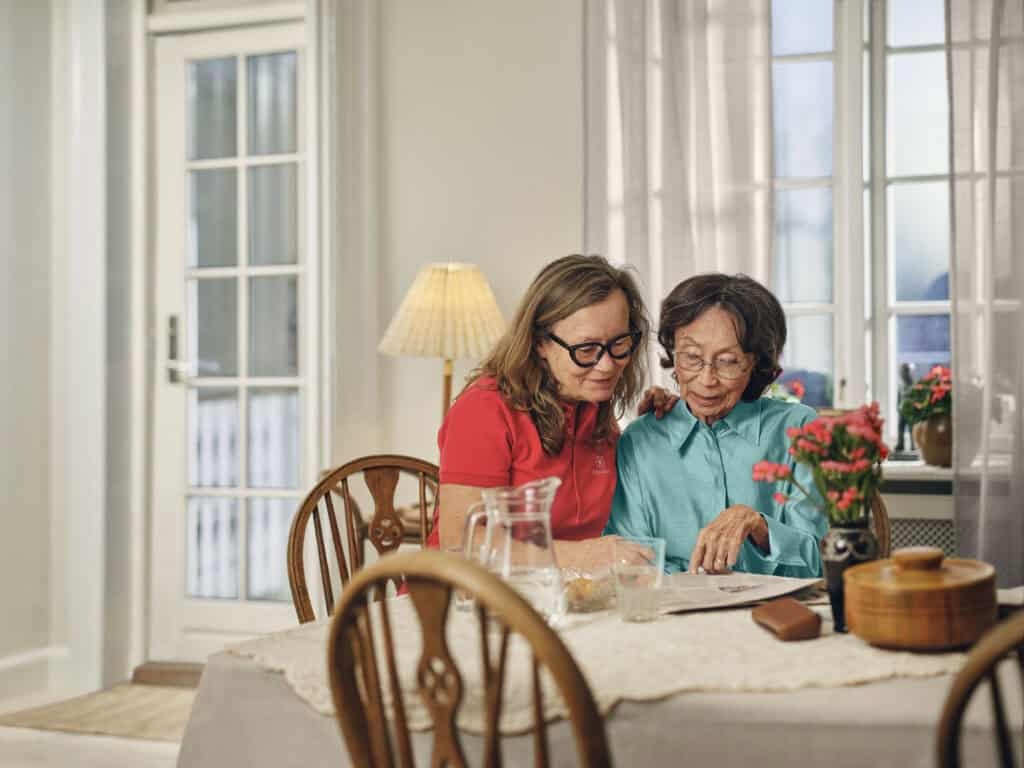News
8 October 2025
How Much Does Live-in Care Cost in New Zealand?
When exploring care options for yourself or a loved one, live-in care offers something truly valuable: the comfort and familiarity of remaining at home with consistent, dedicated support. Unlike traditional aged care facilities, live-in care means your caregiver lives with you, providing personalised assistance throughout the day whilst remaining on-site overnight for complete peace of mind.
Understanding the cost of live-in care isn’t about finding a single price tag. It’s about recognising what shapes the investment and what funding options might offset your expenses. This guide breaks down what actually moves the cost, which government subsidies could help, and how to plan realistically for your situation.
Key Takeaways:
- Live-in care costs vary based on your care hours, clinical needs, location, and coordination requirements
- Government funding through Te Whatu Ora HCSS, ACC, and Carer Support can offset portions of care costs
- For couples or those needing extensive support, live-in care often proves more cost-efficient than hourly care at high hours
What Live-in Care Covers and How Pricing Is Structured
Live-in care typically includes assistance with activities of daily living such as bathing, dressing, and mobility support. You’ll also receive help with domestic tasks like meal preparation, light housework, and companionship throughout the day. Many plans include medication reminders and support with appointments or social outings.
The structure usually involves a caregiver residing in your home for a set number of active care hours across the week. During off-duty periods, they remain on-site and can be reached if needed overnight. Clinical add-ons such as wound care or nursing coordination may incur additional costs depending on complexity.
The Cost Factors That Actually Move the Price
Care Hours & Intensity
The more active care you need each day, the higher your costs will be. Someone requiring minimal assistance with morning routines and meal preparation will have different costs compared to someone needing frequent mobility support or supervision throughout the day. Sleepover arrangements where caregivers are on-call but not actively working differ from periods requiring constant attention.
Clinical Complexity
Care involving dementia behaviours, wound management, or complex medication schedules often requires caregivers with specialised training or nursing oversight. When your care plan needs coordination with clinicians, occupational therapists, or other allied health professionals, this expertise and time investment naturally affects pricing.
Location
Metro areas typically have better caregiver availability, whilst regional locations may involve additional travel costs or back-up logistics. Distance from the provider’s office and the availability of relief caregivers in your area can influence what you’ll pay.
Care Management & Coordination
This is the behind-the-scenes work that keeps your live-in care running smoothly and safely. Care management covers your initial care plan setup, regular reviews to ensure services match your changing needs, and liaising with your GP, specialists, or allied health professionals. It includes administrative support, caregiver rostering, and quality checks – all the coordination that means you can focus on living well rather than managing schedules.
Government Funding to Reduce Your Cost
Several funding streams can help offset live-in care costs in New Zealand:
Te Whatu Ora HCSS (Home and Community Support Services) provides assessment-based funding for in-home support. A Needs Assessment and Service Coordination (NASC) provider evaluates your situation and determines what allocation you’re eligible for based on your care requirements.
ACC covers home help and attendant care when your needs stem from an injury. If you’re recovering from an accident or managing an injury-related condition, ACC may fund portions of your care and potentially necessary equipment.
Carer Support offers funded respite breaks for full-time family carers (those providing more than 4 hours daily of unpaid care). Whilst primarily designed for respite, this funding can be planned strategically alongside live-in care arrangements to provide family members with regular breaks.
It’s important to understand that these funding sources typically cover portions of a care plan rather than the full cost. Most families combine government subsidies with private contributions to meet their complete care needs.
Live-in Care vs Alternative Care Options
| Option | Best For | Supervision | Continuity | Flexibility | Efficiency at High Hours |
| Hourly home care | Low-moderate hours | Intermittent | Variable | High | Drops as hours rise |
| Live-in care | 24/7 at home | Constant | High | High | Beats hourly past a threshold |
| Rest home | Facility-based model | Constant | Staffed | Low | May use Residential Care Subsidy |
For couples where both people need care, or for individuals requiring extensive daily support, live-in care often becomes more cost-efficient than stacking multiple hourly shifts. The break-even point typically occurs when you’d otherwise need 6+ hours of care daily—at which point a single live-in roster delivers better value whilst maintaining the continuity of having one consistent, familiar caregiver.
Plan Your Live-in Care with Dovida
Want a clear picture for your live-in care plan? Contact us now to book a complimentary consultation and review your funding and costs. We’re happy to map your needs to a realistic live-in range and identify what funding could offset your expenses.
Our commitment: If live-in care isn’t the most efficient option for your situation, we’ll be upfront about it and point you towards the care pathway that genuinely serves you best.
Is Live-in Care Cheaper Than a Rest Home in NZ?<em> </em>
It depends on your care level and funding eligibility. For individuals needing moderate support who aren’t eligible for full Residential Care Subsidy, live-in care can be more cost-effective whilst offering the comfort of remaining at home. Rest homes provide a different model with 24/7 staffed care, communal living, and may be subsidised for those meeting eligibility criteria. The key is comparing total costs including subsidies, daily rates, and additional fees for both options.
Can Public Funding Fully Cover Live-in Care?<em> </em>
In most cases, no. Government funding through Te Whatu Ora HCSS, ACC, or Carer Support typically covers a portion of care costs based on assessed needs. Most families combine public funding with private contributions to cover the full scope of live-in care. Your funding allocation depends on your individual assessment, so it’s worth exploring what you qualify for.
Do We Need to Provide a Room and Meals for a Live-in Carer?<em> </em>
Yes, live-in care means your caregiver resides in your home, so you’ll need to provide them with their own room and include them in household meals. This is part of the live-in arrangement and ensures your caregiver is rested and available when needed. Many families find that having a spare room makes live-in care a practical and comfortable option.

